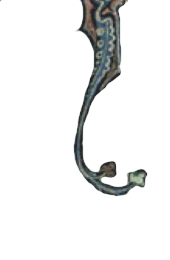Blog
5:26 AM
::
Stephen
(contact)
Scandinavian Museum Watch: Another artwork, this time in Norway, has outraged the local Israeli ambassador (link via Volokh). Entitled "Anti-Semite in the Name of God," the work depicts the words "USA" and "ISRAEL" crossed at the "S," which has been changed into a swastika. It also depicts the Norwegian flag and a lot of non-descript red geometric shapes. In my expert artistic opinion, it's a piece of crap.
This, of course, follows on the controversy surrounding "Snow White and the Madness of Truth," a work displayed in the Stockholm Historical Museum in January. It included a red blood-like pool in which floated a small boat, bearing the smiling portrait of female suicide bomber Hanadi Jaradat. Jaradat had murdered 21 people in a Haifa restaurant, and the installation was damaged by Ambassador Zev Mazel when he visited the museum in January.
Both of these incidents made me remember my own trip to Finland and Sweden last April, when I visited the Stockholm Historical Museum. At the time, the museum's "Prehistory" exhibit -- possibly the same room that later featured Hanadi Jaradat -- included an installation on "The Culture of War," which consisted of the following items in a glass case:
The accompanying text, which a friend of mine paraphrased from the Swedish, surveyed the global movement away from the "culture of war" and concluded: "Even after the fall of the Soviet Union, the culture of war continues in the United States."
Let's leave aside for the moment the substance of the artists' politics (though one might well ask whether, if the U.S. rejected the "culture of war" as strenuously as Sweden, it would still offer security guarantees in Europe and East Asia). As with the often-fatuous collections of poems against the war, it's useless to contest "arguments" in poetry that would be mere polemic if set in prose.
What I find more notable are the demands made by such artists on our political attention, their claims to be prophets by virtue of skill with paint. (Those who think that artistic talent is always coupled with progressive politics should watch the Klan-idolizing Birth of a Nation, or the celebrated Triumph of the Will.) Some art is powerful enough to speak to our political sensibilities, and to persuade even those who unsympathetic to the cause; some art is not. The fear and pain of the girl in Vietnam can make even the most battle-hardened heart recoil at war -- but the Stockholm installation as a whole fails this test. Its message was only accessible if one already believed that militaries were, on the whole, a bad thing, just as the Norwegian painting cannot move those who find the U.S.-Nazi Germany comparison inapposite. Pieces like these are more like poorly-written leaflets than works of art; they possess little more artistic value than the chalk-graffiti scrawl of "ONE SOLUTION: REVOLUTION" on the bridge near my house. (Or, for that matter, the many chalk outlines of dead bodies I saw on the Stockholm streets labeled "USA WAS HERE.") In other words, Guernica they ain't.
Those who make their art subservient to a cartoonish politics will produce cartoonish art. And poets and artists, whatever their talents, are no more likely to possess great political wisdom than the rest of us. As W.B. Yeats once wrote,
I THINK it better that in times like these
A poet keep his mouth shut, for in truth
We have no gift to set a statesman right;
He has had enough of meddling who can please
A young girl in the indolence of her youth,
Or an old man upon a winter’s night.




